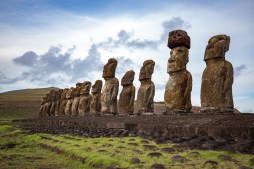Exploring the Biodiversity of Prehistoric Ecosystems: A Journey Through Time
The exploration of prehistoric ecosystems offers a fascinating glimpse into the rich tapestry of life that existed millions of years before humans walked the Earth. From lush forests teeming with giant ferns to sprawling landscapes inhabited by enormous dinosaurs, understanding these ancient environments helps us appreciate the biodiversity that has shaped our planet. Join us on this journey through time as we uncover the unique characteristics and inhabitants of prehistoric ecosystems.
What Are Prehistoric Ecosystems?
Prehistoric ecosystems refer to the diverse biological communities that thrived during various geological periods throughout Earth’s history, long before recorded human history. These ecosystems included various habitats such as forests, wetlands, deserts, and oceans, each hosting unique flora and fauna adapted to their specific environments. The study of these ancient ecosystems is crucial for understanding evolutionary processes and how current ecosystems may respond to changes in climate and habitat.

The Major Types of Prehistoric Ecosystems
Throughout different geological eras – namely the Paleozoic, Mesozoic, and Cenozoic – distinct types of prehistoric ecosystems emerged. In the Paleozoic Era (approximately 541-251 million years ago), extensive swamps dominated landscapes leading to coal formation; this era saw a variety of marine life including trilobites and brachiopods. The Mesozoic Era (about 252-66 million years ago), often termed the Age of Reptiles, featured lush forests filled with conifers where dinosaurs roamed alongside early mammals and birds. Finally, during the Cenozoic Era (around 66 million years ago to present), modern-day flora began to thrive alongside mammals that diversified significantly.
Significant Discoveries in Prehistoric Ecosystem Research
Research into prehistoric ecosystems has led to significant discoveries about ancient species interactions and environmental conditions. Fossils play a critical role in this exploration; they provide evidence about past climates and ecological relationships through techniques such as carbon dating or isotopic analysis. For example, studies have shown how plant diversity influenced herbivore adaptations or how volcanic activity affected climate patterns leading up to mass extinctions.
The Importance of Understanding Prehistoric Biodiversity
Understanding biodiversity within prehistoric ecosystems is essential not only for historical knowledge but also for contemporary conservation efforts. By studying past extinctions caused by natural events or climate shifts, scientists can identify patterns that may inform current biodiversity loss due to human activity. This knowledge helps in developing strategies for preserving endangered species today by fostering resilience against similar changes.
Exploring Through Modern Technology
Modern technology plays an integral role in exploring these ancient worlds more accurately than ever before—using tools like Geographic Information Systems (GIS) mapping or advanced imaging techniques allows researchers to reconstruct habitats based on fossil evidence meticulously. Virtual reality simulations are even being developed for educational purposes allowing us all a chance at immersing ourselves in these remarkable environments.
In conclusion, exploring prehistoric ecosystems reveals not just a timeline filled with extraordinary creatures but also profound lessons about change over eons—a reminder that our planet’s biosphere is both dynamic and fragile. As we continue this research journey forward into time’s depths, it empowers us with insights necessary for sustaining our modern environment while honoring every life form’s intricate connection across ages.
This text was generated using a large language model, and select text has been reviewed and moderated for purposes such as readability.


